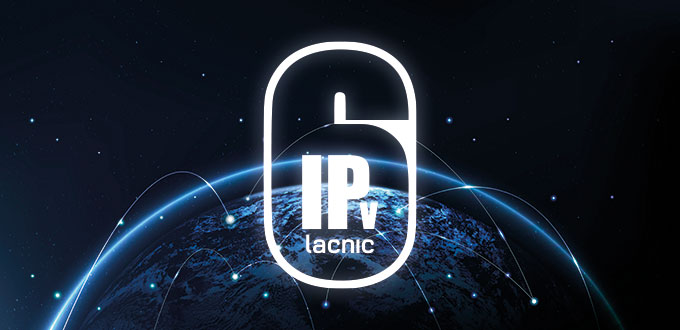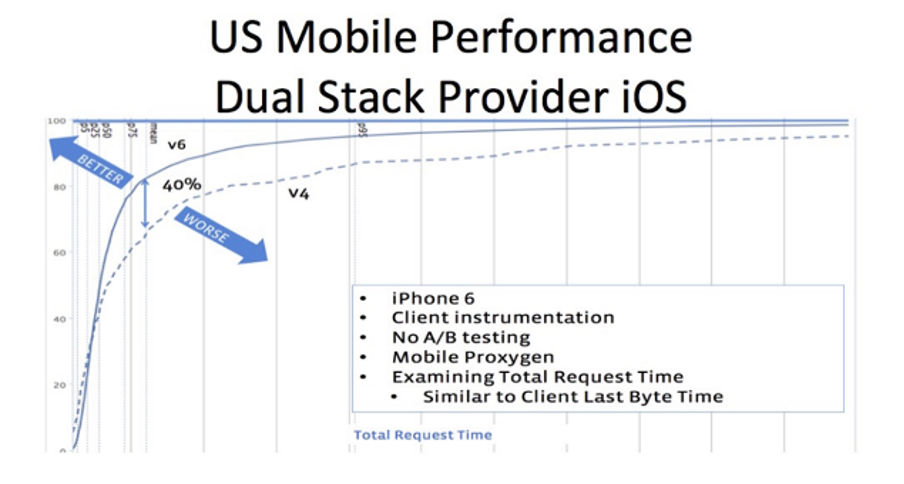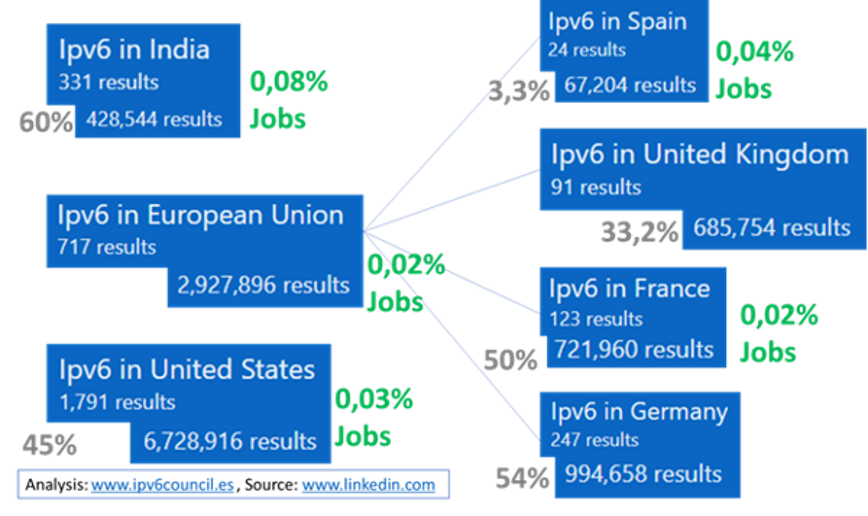IPv6 in the Enterprise: Exploring Business Opportunities
11/04/2023

By Carlos Ralli Ucendo, chairman of IPv6 Council Spain
IPv6 adoption can become a drawback and represent additional costs for a company’s continued operation, without bringing in any other return at the business level. An efficient evolution requires starting the implementation process as soon as possible, considering the benefits that IPv6 will bring to our business and the lessons learned from the experience of others.
Why IPv6 can be good business. We are changing the rules of the Internet game. In the case of IPv6, Darwin’s theory of evolution applies — companies and organizations that best adapt to change will survive. If we don’t get an early start with IPv6, we will be developing platforms that do not support new features and that will soon become obsolete.
Companies that focus on innovation will have a competitive advantage. Within the IETF (the Internet Engineering Task Force, a working group responsible for Internet standards) all innovations are being defined with IPv6.
For example, recent developments in IoT (Internet of Things) in the home are IPv6 only. Some tech giants use IPv6 only for their home devices, with the Matter and Thread/6LowPAN standards.
Those that apply innovation in network automation through IP segmentation also have an advantage. The IETF has defined an end-to-end mechanism (SRv6) that allows segmenting the network from host to cloud. In these cases, IPv6 must be used, as there is no other possible alternative.
Another example is web 3.0, which identifies digital assets that can be transacted. The Blockchain BSV working group focuses on peer-to-peer transactions without intermediaries, based solely on IPv6. This is why adopting IPv6 means getting behind innovation and emerging solutions.
Added value. All these companies will generate enough efficiencies, added value, and competitive advantages to allow this evolution to be identified as a business opportunity. This opportunity, however, will not fall out of the blue. Instead, it will require taking the risk to explore the new model firsthand and being among the first to develop a competitive advantage. Ultimately, it is about following the IETF model when, as described above, it decides to develop the IoT for low power mesh networks (LowPANs) with IPv6 only, not IPv4.
As early as 2015, companies such as Meta/Facebook identified that an almost entirely IPv6-only corporate network (90% then, 100% today) was more efficient and allowed them to better innovate, as described in the article linked below the following image taken from the Internet Society (ISOC).

Source: ISOC-2015: Facebook News Feeds Load 20-40% Faster Over IPv6 – Internet Society
In fact, they were the first to perceive and announce that IPv6-enabled mobile phones were browsing their services. Other key players such as Microsoft have followed the same road towards IPv6-only.

Source: IPv6 Council UK
How much a company that does not deploy IPv6 can lose is difficult to quantify. In IoT in the home, all major companies are adapting to the IPv6 standard. In this area, we may be left outside the alliance with the most important players, and the cost of being left out is very high. The later we migrate, the higher the cost will be in terms of investments to adapt systems and platforms.
How IPv6 deployment can improve our business. IPv6 adoption must have a common root —the training of human resources— and it must cut across the organization. Only if the business strategy and marketing teams understand IPv6 will the organization be able to succeed. Technical teams should not be left alone in their fight for IPv6.
The company should be aware that it is not merely a matter of addressing, but that the IETF itself is already moving towards IPv6 for innovation. Avoiding the cost of intermediate solutions is crucial (for example, using network address translators, using overlapping private addresses, turning to brokers to purchase IPv4 addresses, etc.).
In an attempt to shed some light on where opportunities will be, we can mention the following:
- New ecosystems will be IPv6-ready or IPv6-only. As we have seen in the cases of IoT for the home and WAN segmentation, it does not make sense to waste resources on backward compatibility that limits functionality and generates costs.
- Scalability is key. As AWS is proving, everything can be solved with IPv4, but sometimes the solution affects the scale-cost equation. This is why we should move towards IPv6-only models, even if the interactions with others are dual-stack.
- The end-to-end connectivity principle based on which the Internet was designed made it possible to innovate a multitude of services. The existence of NAT has led to the development of complex technologies (NAT traversal) for P2P services.
- The absolute distribution of interactions and resources (P2P applied to models such as blockchain) and of computing (Edge Computing) will require a microservices architecture which, far from being entirely hosted in the cloud (Cloud Computing), will be distributed among intermediate nodes (Edge Computing) and user terminals (low-code and no-code user generated servers). This distributed and highly interactive model can only be explored in IPv6-only environments, thus avoiding any limitation derived from the interaction with IPv4 elements.
- Home and small business service models can evolve with Edge Computing architectures, the availability of dozens of subnets and millions of public addresses for terminals, and quality segmentation or differentiated filtering for unidirectional or bidirectional interactions among those elements.
- The use of new protocols and mechanisms or of protocols and mechanisms with lower levels of testing will have an impact on Internet security architecture. This is also due to the decrease in the use of NAT, greater use of public addressing, changes in aggregation and filtering techniques, ultra-scalability of IoT and IP mesh networks, etc. All of this demands attention that many security experts and companies cannot provide today.
- Finally, the growing speed with which IPv6 is being adopted at the corporate level will demand IPv6 experts in all the areas described in this article as well as the development of resources for training, consultancy, and strategy. This is reflected in the employment trends that show higher demand in the regions with the highest levels of adoption.
The dramatic change is more than a digital transformation; it is a transformation of the entire global Internet village. IPv6 is already utilized by 40% of users and there are tools that are only available in this new environment.

Source: IPv6 Council Spain. Study based on LinkedIn announcements (June 2022)
IPv6 Council Spain looks forward to your suggestions or comments, which can be sent to ipv6forum.spain@gmail.com
__________________________________________________________________
More information about IPv6 Council Spain: http://www.ipv6council.es
IPv6 reaches the Enterprise: (video in Spanish 1’ 29’’): https://www.youtube.com/watch?v=0NJZNo-NLbQ
IPv6 for CIOs, CTOs, and IT (video in Spanish 2’ 54’’): https://www.youtube.com/watch?v=2XyVKNN6b2s
__________________________________________________________________